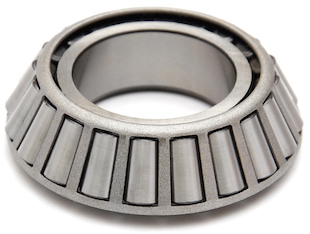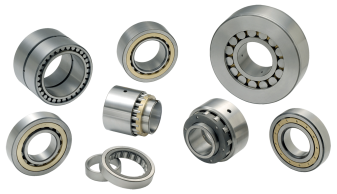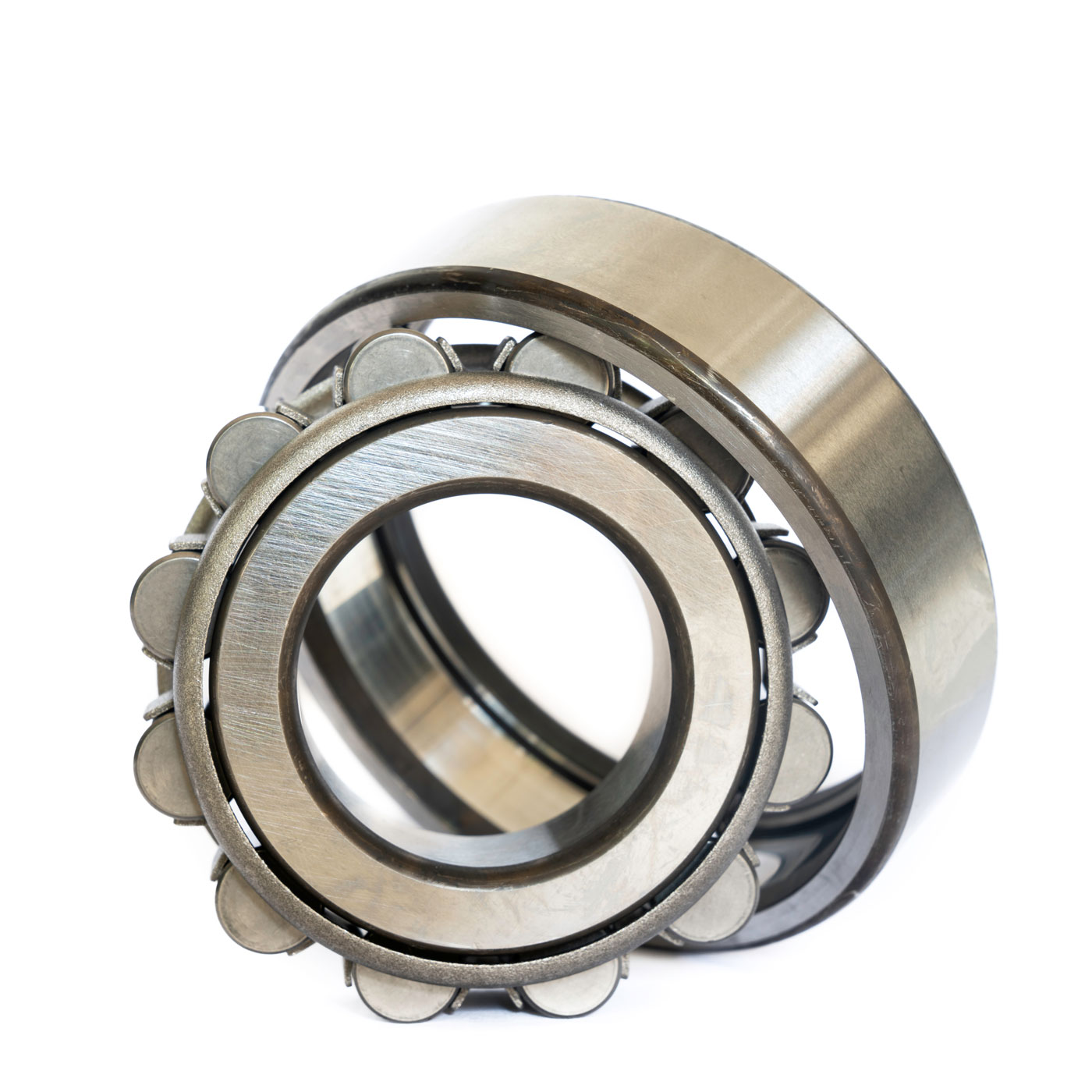How do Tapered Roller Bearings Contribute to the Efficiency of Automotive Wheel Hubs?
Tapered roller bearings play a crucial role in enhancing the efficiency and performance of automotive wheel hubs. They are specifically designed to handle both radial and axial loads, making them ideal for supporting the weight of the vehicle, providing smooth rotation, and ensuring safe and reliable operation. Here’s how tapered roller bearings contribute to the efficiency of automotive wheel hubs:
- Load Distribution:
Automotive wheel hubs experience a combination of radial and axial loads due to the vehicle’s weight, acceleration, braking, and cornering forces. Tapered roller bearings efficiently distribute these loads, preventing localized stress concentrations and ensuring uniform load sharing across the bearing components.
- Smooth Rotation:
Tapered roller bearings enable smooth and low-friction rotation of the wheel hub around the axle. This minimizes rolling resistance, leading to improved fuel efficiency and reduced energy consumption.
- Axial Load Handling:
During cornering and steering maneuvers, automotive wheel hubs encounter axial loads. Tapered roller bearings are designed to handle these axial loads without compromising their ability to carry radial loads, ensuring stable and controlled vehicle handling.
- Reduced Friction and Wear:
The tapered geometry and precision design of the rollers and raceways in these bearings minimize friction between components. This results in reduced wear, lower heat generation, and extended bearing life, contributing to long-term efficiency.
- Reliable Performance:
Tapered roller bearings are known for their durability and resistance to wear and fatigue. They maintain their performance even under harsh operating conditions, ensuring consistent and reliable wheel hub operation.
- Enhanced Safety:
The efficiency of tapered roller bearings directly impacts the vehicle’s stability and control. Properly functioning bearings prevent issues like wheel wobbling, uneven tire wear, and compromised steering, contributing to safe driving conditions.
- Easy Replacement:
When maintenance or replacement is required, tapered roller bearings can be easily installed and removed. This simplifies the servicing process and reduces vehicle downtime.
- Reduced Maintenance Costs:
The long service life and reliability of tapered roller bearings minimize the need for frequent maintenance and replacement, reducing overall maintenance costs for the vehicle owner.
- Optimized Performance:
Efficient wheel hubs with properly functioning tapered roller bearings lead to improved vehicle performance, including better acceleration, braking, handling, and overall drivability.
Overall, tapered roller bearings contribute to the efficiency and effectiveness of automotive wheel hubs, enhancing vehicle performance, safety, and longevity.
What is the impact of proper lubrication on the performance and lifespan of cylindrical roller bearings?
Proper lubrication plays a crucial role in the performance and lifespan of cylindrical roller bearings. Lubrication is essential for reducing friction, minimizing wear, dissipating heat, and preventing corrosion. Let’s explore the impact of proper lubrication in more detail:
- Friction Reduction:
Proper lubrication forms a thin film of lubricant between the rolling elements and raceways of cylindrical roller bearings. This lubricant film separates the surfaces and reduces direct metal-to-metal contact. As a result, friction and sliding resistance are significantly reduced. The reduction in friction helps to minimize energy loss, improve efficiency, and reduce wear on the bearing components.
- Wear Prevention:
Lubrication creates a protective barrier between the rolling elements and raceways, preventing excessive wear. The lubricant film prevents metal-to-metal contact and acts as a cushion, absorbing shock and distributing the load evenly. By reducing wear, proper lubrication helps to prolong the lifespan of cylindrical roller bearings, ensuring reliable performance over an extended period.
- Heat Dissipation:
During operation, cylindrical roller bearings generate heat due to friction. Proper lubrication helps dissipate this heat by carrying it away from the bearing surfaces. The lubricant absorbs and transfers the heat, preventing excessive temperature buildup that could lead to premature failure. Effective heat dissipation through proper lubrication helps maintain the bearing’s operational stability and prevents thermal damage.
- Prevention of Corrosion:
Lubrication acts as a protective layer, preventing the direct contact of moisture or contaminants with the bearing surfaces. This barrier helps to inhibit corrosion and the formation of rust on the bearing components. By keeping the surfaces clean and protected, proper lubrication aids in maintaining the integrity and longevity of cylindrical roller bearings, especially in challenging environments.
- Noise Reduction:
Proper lubrication contributes to reducing noise and vibration in cylindrical roller bearings. The lubricant film acts as a cushion, damping the vibrations and reducing the generation of noise during operation. This is particularly important in applications where noise reduction is critical, such as precision machinery or equipment operating in quiet environments.
- Contamination Control:
Proper lubrication helps in controlling and minimizing the ingress of contaminants into cylindrical roller bearings. The lubricant forms a barrier that helps prevent the entry of dirt, dust, and other particles that could lead to premature wear or damage. By maintaining cleanliness, proper lubrication enhances the overall performance and reliability of the bearing.
In summary, proper lubrication is essential for optimizing the performance and extending the lifespan of cylindrical roller bearings. It reduces friction, minimizes wear, dissipates heat, prevents corrosion, reduces noise, and controls contamination. Bearing manufacturers and operators must follow recommended lubrication practices, including selecting the appropriate lubricant type and viscosity, ensuring proper lubricant replenishment, and adhering to scheduled maintenance intervals, to maximize the benefits of lubrication and ensure the long-term reliability of cylindrical roller bearings.
Can you explain the design and structure of cylindrical roller bearings?
Cylindrical roller bearings have a specific design and structure that enables them to handle high radial loads and moderate thrust loads. Let’s explore the key components and features of cylindrical roller bearings:
- Inner and Outer Rings:
The inner and outer rings of cylindrical roller bearings are typically made of high-quality bearing steel. The inner ring is mounted on the rotating shaft, while the outer ring is usually mounted in a stationary housing. The rings are precision-machined with raceways that serve as the contact surfaces for the cylindrical rollers.
- Cylindrical Rollers:
Cylindrical rollers are the main load-carrying components of the bearing. They are cylindrical in shape and have a high length-to-diameter ratio. The rollers are precision-ground to ensure close tolerances and uniform size distribution. The large contact area between the rollers and the raceways allows for efficient load distribution and reduced stresses.
- Cage:
A cage, also known as a separator, is used to keep the cylindrical rollers evenly spaced and prevent them from coming into contact with each other. The cage is typically made of steel or other materials such as brass or polyamide (nylon). It provides guidance and retains the rollers in position during operation, ensuring smooth rolling motion and preventing roller skewing or jamming.
- Flanges:
Cylindrical roller bearings may have flanges on the inner or outer rings or both. Flanges are raised edges or shoulders that provide axial guidance and help in locating the bearing in the axial direction. The presence of flanges can also improve the overall rigidity and axial load-carrying capacity of the bearing.
- Internal Clearance:
The internal clearance of cylindrical roller bearings refers to the space between the rollers and raceways when there is no external load applied. It affects the bearing’s thermal expansion, running accuracy, and ability to accommodate misalignment or axial displacement. Different levels of internal clearance are available to suit specific application requirements.
- Lubrication:
Cylindrical roller bearings require proper lubrication to minimize friction, reduce wear, and dissipate heat generated during operation. Lubrication helps to maintain the separation between the rolling elements and raceways, preventing metal-to-metal contact and minimizing the risk of premature failure. Common lubrication methods include grease lubrication and oil lubrication.
- Sealing and Protection:
Cylindrical roller bearings can be equipped with various types of seals or shields to prevent the ingress of contaminants and retain lubrication. These seals and shields help to extend the bearing’s service life and maintain its performance by providing protection against moisture, dust, and other external factors that could cause damage or deterioration.
Overall, the design and structure of cylindrical roller bearings allow them to efficiently handle radial loads and moderate thrust loads. The combination of inner and outer rings, cylindrical rollers, cage, flanges, internal clearance, lubrication, and sealing work together to provide reliable and smooth rotational motion in machinery applications.
editor by CX 2024-04-29




